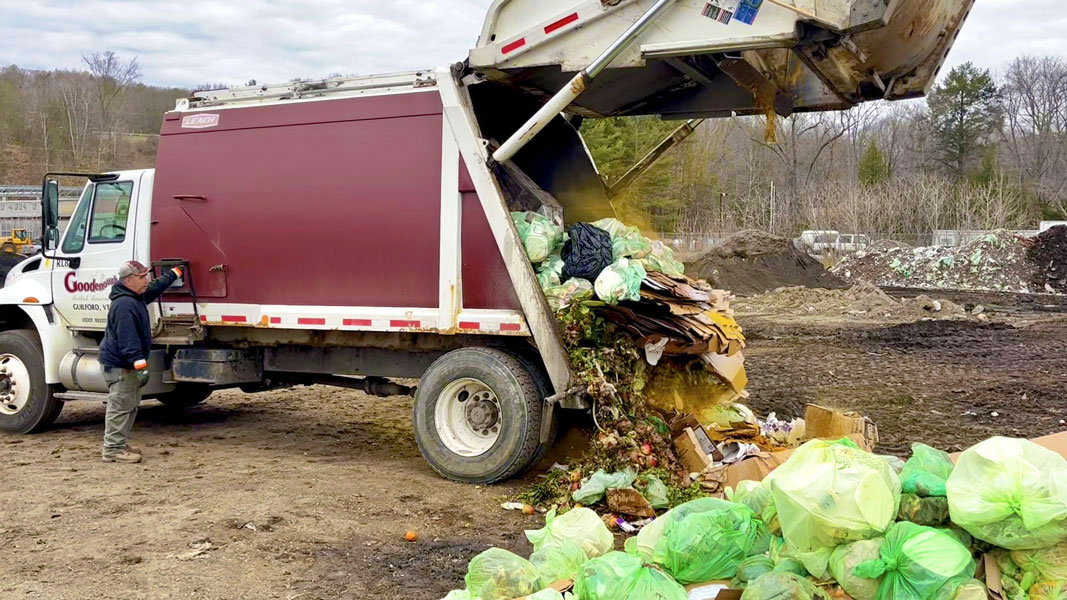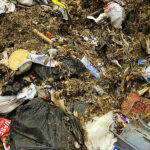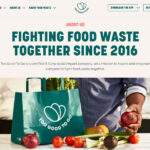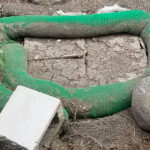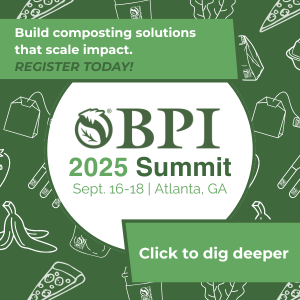Top: The MSW composition study estimated, for the first time, a food waste recovery rate, which includes composting at facilities like the Windham Solid Waste Management District. Photo by John Fay
The Vermont Department of Environmental Conservation (DEC) released its “2023 Vermont Waste Composition Study” in May 2024. The previous municipal solid waste (MSW) composition study was in 2018. The project team, comprised of MSW Consultants, DSM Environmental Services and the University of New Hampshire, reports that although the percentage of food scraps disposed in MSW decreased very little (18.8% in 2023 vs. 19.4% in 2018), the underlying tonnage has decreased by 13%. “This supports the effectiveness of the mandated food waste disposal ban,” according to DEC. Vermont’s Universal Recycling Law, Act 148, banned disposal of food waste and other organics from the landfill in phases, starting in 2014. The full ban took effect in 2020, when all residential food scraps had to be diverted from disposal.
Overall, the 2023 study found that current waste stream composition is very similar to the 2018 results for MSW — generally considered household and business trash. Figure 1 shows the breakdown of aggregate MSW composition by material group. Consistent with the 2018 study, and with other recently performed statewide studies, organics, paper, and special/other are the most prevalent materials being disposed in landfills or incinerators. The findings estimate that over 43% of the MSW waste stream is not currently divertible from the trash in Vermont, while 24% is potentially divertible outside of traditional mixed recycling programs. Potentially divertible items include materials like compostable paper, textiles, books, small appliances and electronics, some rigid plastics and clean plastic films, and scrap metal.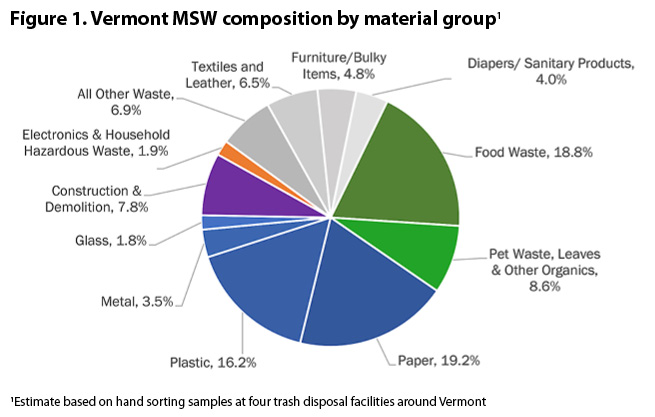
The 2023 Waste Composition Study made a first-time estimate of Vermont’s food waste recovery rate — about 50.7% to 56.8%. “The Project Team is not aware of other states that have attempted to estimate their food waste recovery rate,” note the report’s authors. “While little data is available, the Project Team believes this estimate may be at the high end of food waste recovery rates in the United States.” Section 6.0, “Residential Food Scrap Management Research,” discusses the recovery rate in more detail. Like the 2018 study, households were surveyed about their food scrap diversion methods. The 2023 data found that 43% of households compost in their backyards, 12% have curbside service, 13% use drop-off sites, 12% divert to animal feed (and 9% to pets), and 12% put food waste in the garbage disposal.
The MSW composition study captured percentage of ICI (institutional, commercial, industrial) mandated food waste disposed by whether it was packaged or unpackaged. The data shows that of the 20% disposed, 12.1% was unpackaged and 8.2% was packaged. This data is for ICI food waste disposed in-state vs. transferred out of state for diversion. Section 7.0 of the study report, “Organics Management Transportation Research,” surveyed the 37 DEC-permitted food scrap transporters (19 of 37 responded). Based on responses, the project team estimates that 4,756 tons of food scraps are being diverted annually to out-of-state facilities or in-state uses (such as animal feeding operations and farms) that are not reported to Vermont DEC.


